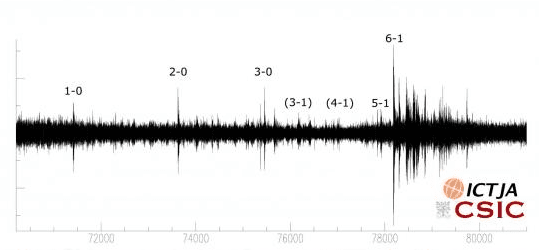
By Hamish Johnston
International Women’s Day was this week and to celebrate, we have published K Renee Horton’s review of the film Hidden Figures and the book by Margot Lee Shetterly that the film is based on. The book and film tell the true stories of African-American female mathematicians who worked at NASA and played a crucial role in America’s race into space during the Cold War. Indeed, they calculated the flight paths that would send Neil Armstrong to the Moon.
Horton is president of the National Society of Black Physicists and a NASA engineer and she laments that she didn’t know about this remarkable group of women when she was growing up in the 1970s and 1980s. “Hidden Figures is an inspiring story that outlines the significant and remarkable impact these intelligent and brave African-American women had on some of NASA’s greatest hits,” she writes.
Readers may remember a LEGO set featuring minifigures of five women who played a crucial role in the history of the US space effort. Created in July 2016 by US science writer Maia Weinstock, the LEGO set consists of computer programmer Margaret Hamilton; mathematician and space scientist Katherine Johnson; astronaut Sally Ride; astronomer Nancy Grace Roman; and astronaut Mae Jemison, who in 1992 became the first African-American woman in space. Well LEGO has now officially announced that the set will be made into an official product, with LEGO designers refining it for release, which could be by the end of the year. “I’m extremely excited that the set was chosen, and very appreciative of the opportunity LEGO will be giving to children around the world to learn about these five women,” Weinstock says.

Earthquakes are generally associated with shifting tectonic plates and other geological processes. But on Wednesday night a localized mini “earthquake” was triggered in Barcelona by celebrating football fans jumping for joy inside the Camp Nou football stadium. Having required three goals with less than three minutes of normal time remaining, Barça somehow achieved the impossible, beating Paris Saint-Germain 6–1 on the evening (winning the two-match tie 6–5 on aggregate). They completed the miracle in the fifth minute of injury time, triggering an earthquake of joy among the majority of the 100,000 spectators who leapt up and down, some in tears embracing the strangers surrounding them.
According to local earth scientists, the celebrations also triggered an actual earthquake of sorts. This seismograph, recorded 500 m from the stadium at the Jaume Almera Institute of Earth Sciences, shows the relative size of vibrations as the goals flew into the Paris net. The spike associated with the winning goal is the largest recorded since the apparatus was installed five years ago. Seismologist Jordi Díaz told El País that because the energy caused by this sort of quake is quickly dissipated, it is difficult to rank the earthquake magnitude on the Richter scale. He said, however, that studying these sorts of urban earthquakes can help geophysicists to better understand natural earthquakes.



